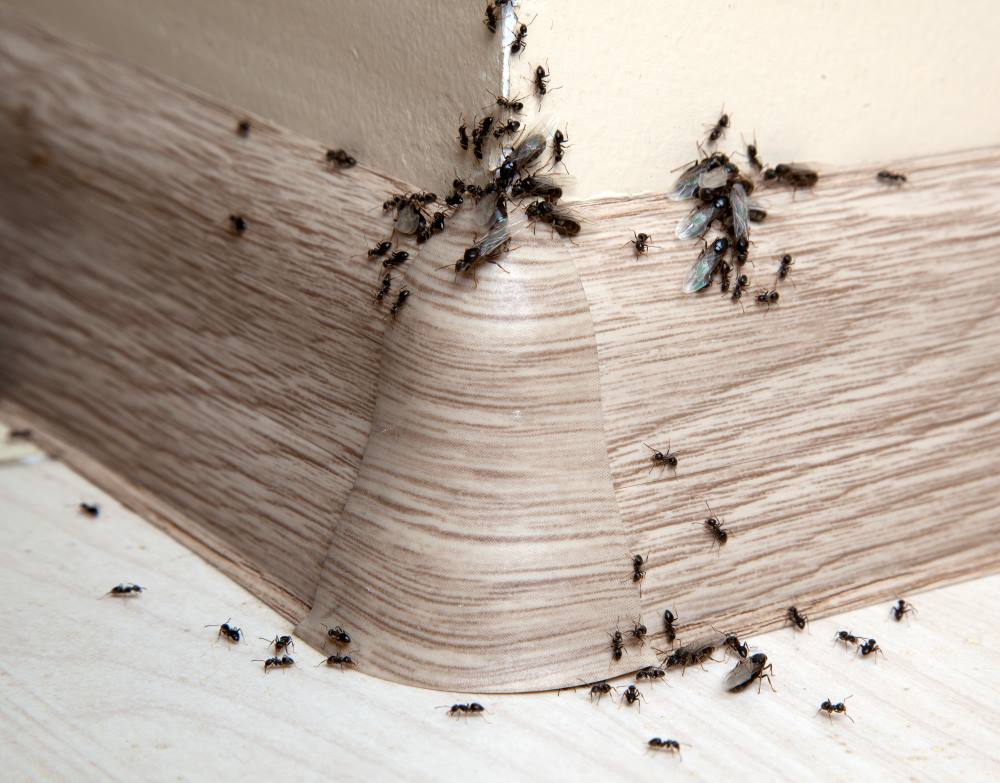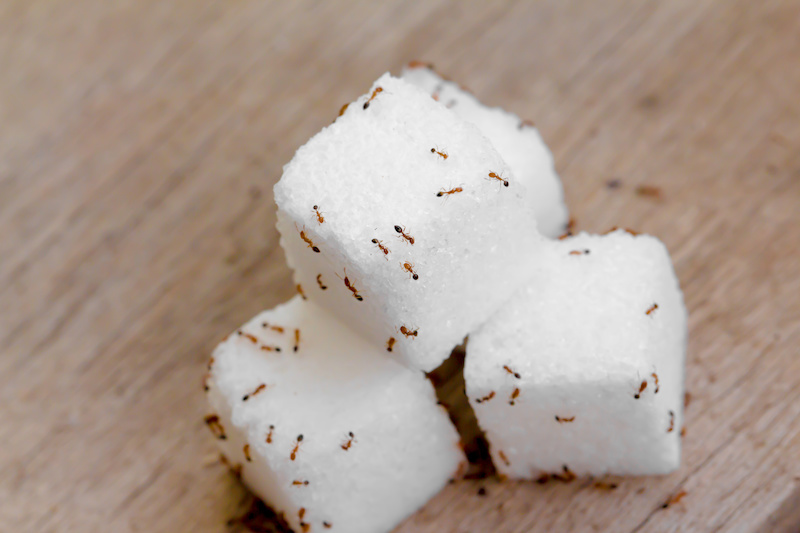
Updated April 15, 2025
Are you wondering about the difference between carpenter ants and sugar ants? You’re not alone. These two species of ants can be challenging to tell apart, and they often get lumped into the same category.
In this blog, we’ll explain everything you need to know about carpenter ants vs. sugar ants, from their physical traits and habitats to their diets, behavior, and reproduction. By the end, you’ll be able to spot the differences with ease and understand how to handle each type of ant effectively.
What’s the Difference Between Carpenter Ants and Sugar Ants?

Carpenter ants and sugar ants are two of the most common species of ants found in North America. They are generally considered nuisance pests that live both indoors and outdoors.
Carpenter ants are larger than sugar ants and can range in size from a few millimeters up to a few centimeters. They are usually black, but can also be red or brown. Sugar ants are much smaller, usually between 1 and 3 millimeters long. They are typically yellow or light brown in color.
Physical Characteristics of Carpenter Ants vs. Sugar Ants
Carpenter ants have a few distinct physical characteristics that differentiate them from sugar ants. They have a three-segmented body with a rounded abdomen, a narrowed waist, and large mandibles. Their antennae are bent like an elbow, and their eyes are compound.
Sugar ants have a two-segmented body with a pointed abdomen, a broad waist, and small mandibles. Their antennae are straight, and their eyes are single.
Differences in Habitat Preferences
Carpenter ants and sugar ants prefer different habitats, which makes them easier to tell apart. Carpenter ants thrive in damp, humid spots like rotting logs, tree stumps, and wooded areas. They’re also drawn to moist wood inside homes and will tunnel through it to build nests.
Sugar ants prefer dry, sunny places like sidewalks, patios, and driveways. They rarely nest indoors and are usually just scouting for food when they wander into your home.
Differences in Diet
Carpenter ants and sugar ants have different tastes when it comes to food. Carpenter ants are omnivores with a diverse diet that includes other insects, plant sugars, fruits, and even decaying wood. They’ll also scavenge dead animals when available.
Sugar ants, however, have a sweet tooth. They primarily feed on sugary substances like honeydew, nectar, fruit juices, and other sweet foods. While their main preference is sugar, they will also eat dead insects and small invertebrates when they find them.
Differences in Behavior
Carpenter ants and sugar ants differ in their behavior as well. Carpenter ants are known to be aggressive and territorial and will attack other insects that enter their territory. Sugar ants, on the other hand, tend to be more passive and will usually only attack if they feel threatened.
Social Structure of Carpenter Ants and Sugar Ants

Carpenter ants and sugar ants also differ in their social structure. Carpenter ants live in large colonies, with a single queen and hundreds of workers. The workers are divided into three categories: foragers, nest builders, and soldiers.
Sugar ants live in much smaller colonies, with a single queen and no more than a few dozen workers. The workers are not divided into categories, and they all perform the same tasks.
Reproduction and Life Cycles of Carpenter Ants and Sugar Ants
Carpenter ants and sugar ants differ in their reproduction and life cycles, as well. Carpenter ants reproduce through a process known as parthenogenesis, in which the queen produces eggs without the help of a male. The eggs hatch into larvae, which then turn into pupae and eventually adult ants.
Sugar ants reproduce through a process known as haplodiploidy, in which the queen produces male and female eggs with the help of a male. The eggs hatch into larvae, which then turn into pupae and eventually adult ants.
How to Control Carpenter Ants and Sugar Ants

If you’re dealing with carpenter ants or sugar ants, tackling the problem starts with removing what attracts them. Eliminate food sources by sealing cracks and crevices, fixing leaks, and storing food in airtight containers. Reducing moisture is especially important for carpenter ants, as they’re drawn to damp, decaying wood.
Insecticides can also be helpful in controlling both carpenter ants and sugar ants, but it’s crucial to choose the right product and use it correctly. Always read the label and follow the instructions carefully. If you’re uncertain about the best approach or want more reliable results, contacting a pest control professional is the safest and most effective option.
Ant Control in the Bay Area
Carpenter ants and sugar ants may look similar, but knowing their differences in appearance, habitats, diets, behavior, and reproduction makes them easier to identify and control. If you spot either species around your home or yard, take action by removing food sources, sealing entry points, and using appropriate insecticides.
You can tackle infestations more effectively with a clearer understanding of carpenter ants vs. sugar ants. If you’re unsure about the best approach or need expert help, don’t hesitate to reach out to a pest control professional.



